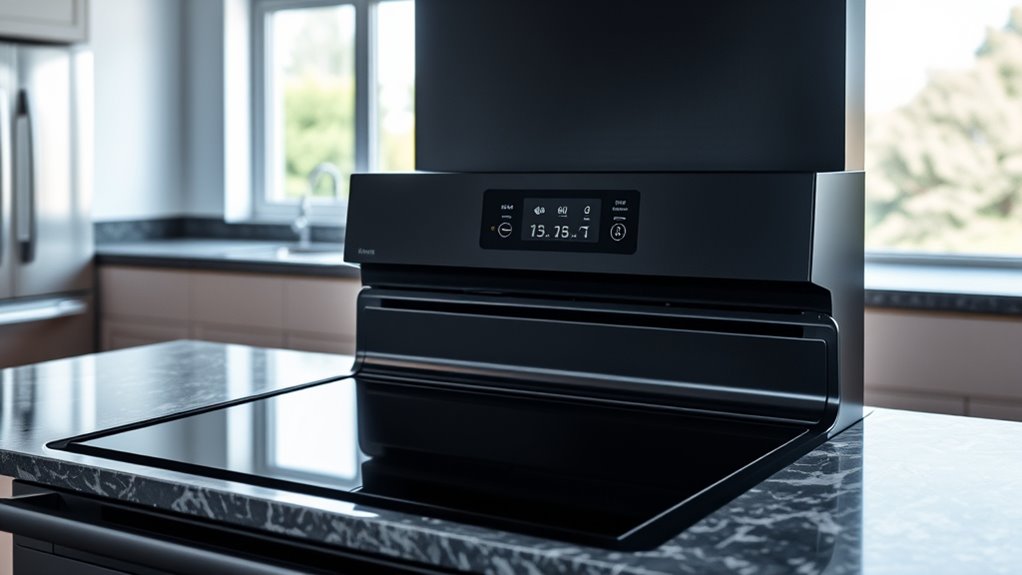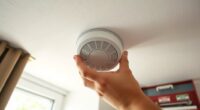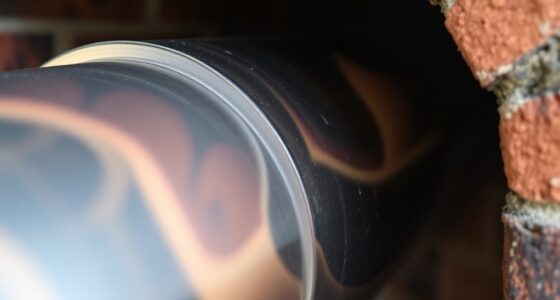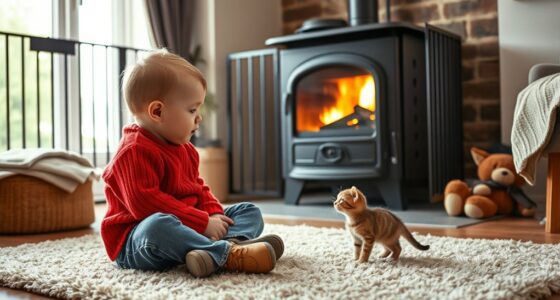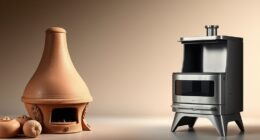EU Ecodesign 2015/1185 sets strict emission limits for new stoves, pushing you to choose appliances that are cleaner, more efficient, and environmentally friendly. It requires manufacturers to incorporate advanced technologies, ensuring reduced emissions of fine particles and gases, which benefits both your health and air quality. By meeting these standards, stoves become safer and more efficient. To discover how these regulations impact your options and what you should look for, continue exploring the details.
Key Takeaways
- Sets strict emission limits for new stoves to improve air quality and reduce harmful pollutants in the EU.
- Requires advanced combustion technology and better control systems to ensure compliance with emission standards.
- Mandates testing and certification processes to verify that stoves meet specified emission and efficiency benchmarks.
- Phases out outdated, inefficient stove models in favor of cleaner, more sustainable heating appliances.
- Promotes innovation and consumer adoption of environmentally friendly, energy-efficient stove designs across the EU.
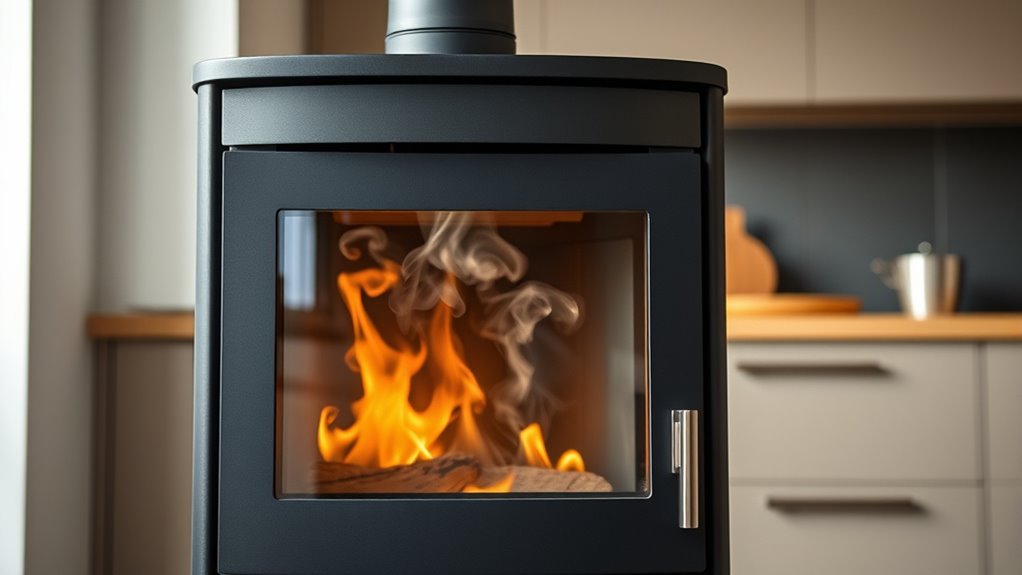
The EU Ecodesign 2015/1185 regulation sets strict standards to improve the energy efficiency and environmental performance of various products sold within the European Union. One of its key focuses is on new stoves, where it aims to reduce emissions and promote cleaner heating solutions. As someone involved in manufacturing, selling, or using these stoves, you need to understand how these regulations impact appliance efficiency and emission standards. The regulation mandates that new stoves meet specific emission limits to minimize air pollution and health risks. This means that older, inefficient models are phased out, and new models must incorporate advanced combustion technologies to achieve lower particulate matter and carbon monoxide emissions.
EU Ecodesign 2015/1185 sets strict standards to improve stove efficiency and reduce emissions for cleaner, greener heating solutions.
The regulation pushes manufacturers to develop stoves that operate more efficiently, which directly benefits consumers and the environment. Higher appliance efficiency means less fuel consumption for the same heat output, saving you money and reducing your carbon footprint. For manufacturers, this translates into designing stoves with better insulation, optimized combustion chambers, and improved control systems that ensure complete fuel combustion. These features help to meet the stringent emission standards set by the regulation, which aim to reduce fine particles and harmful gases released into the atmosphere.
For consumers, this means that the stoves you purchase are not only more energy-efficient but also cleaner. Reduced emissions contribute to better air quality, especially in urban areas where residential heating can considerably impact local pollution levels. When choosing a new stove, you should look for models that specify compliance with EU emission standards. These standards are designed to guarantee that your appliance operates within safe and environmentally friendly limits. Adopting advanced combustion technology can significantly enhance stove performance and emission reductions.
Manufacturers are encouraged to innovate endlessly to meet these standards, which leads to more sustainable heating options. The focus on appliance efficiency ensures that stoves consume less fuel while maintaining performance, which benefits your wallet and the planet. The regulation also emphasizes the importance of proper testing and certification to verify compliance, so you can trust that a stove labeled as compliant truly meets the required emission limits and efficiency benchmarks.
Frequently Asked Questions
How Will Compliance Deadlines Affect Existing Stove Inventories?
Compliance deadlines will prompt you to manage your inventory carefully. You’ll need to phase out or upgrade existing stoves to meet new emission standards, which could lead to surplus stock if not addressed promptly. Effective inventory management becomes vital to avoid losses and guarantee a smooth shift. Stay proactive by planning your stock disposal or upgrades ahead of deadlines, minimizing disruptions and aligning with regulatory requirements.
Are There Exemptions for Certain Stove Types or Regions?
You should know that there are regional exemptions and stove type exceptions under the regulation. For instance, certain rural or remote areas might receive regional exemptions due to specific heating needs. Additionally, some stove types, like traditional or artisanal models, may qualify for exceptions. These exemptions aim to balance environmental goals with practical considerations, but you’ll need to check the specific criteria for your region and stove type to confirm eligibility.
What Are the Penalties for Non-Compliance With the Regulation?
Ignoring the rules lands you in hot water—literally. Penalty enforcement for non-compliance with emission limits can include hefty compliance fines and even product bans. Authorities take these regulations seriously, so you risk losing your license or facing legal action if you disregard them. Stay compliant, or you’ll find yourself tangled in legal red tape, fighting fines and reputation damage. Better to follow the rules than pay the price!
How Will Consumer Choices Be Impacted by These Emission Limits?
Your consumer behavior will shift as emission limits encourage you to choose more eco-friendly stoves, leading to a preference for compliant, efficient models. These regulations may reduce product availability of older, higher-emission stoves, pushing you toward newer, greener options. As a result, you’ll likely see an increase in sustainable choices, fostering a market that rewards environmentally conscious products and influences your purchasing decisions toward lower-emission stoves.
Will There Be Support or Incentives for Manufacturers to Meet Standards?
You’ll find that manufacturers receive financial incentives and manufacturing support to meet these strict emission standards. These incentives encourage innovation and help offset costs, making it easier for them to develop eco-friendly stoves. As a result, you benefit from more sustainable options that comply with regulations, ensuring cleaner air and energy efficiency. This support aims to motivate manufacturers to prioritize environmentally friendly technologies while maintaining product affordability.
Conclusion
By following EU Ecodesign 2015/1185, you guarantee your new stove meets strict emission limits, helping the environment and reducing health risks. It’s no coincidence that these standards come at a time when cleaner air matters more than ever. When you choose compliant stoves, you’re not only making a smart decision for your home but also contributing to a broader effort for sustainability. Sometimes, the smallest choices, like selecting eco-friendly appliances, can make the biggest difference.

